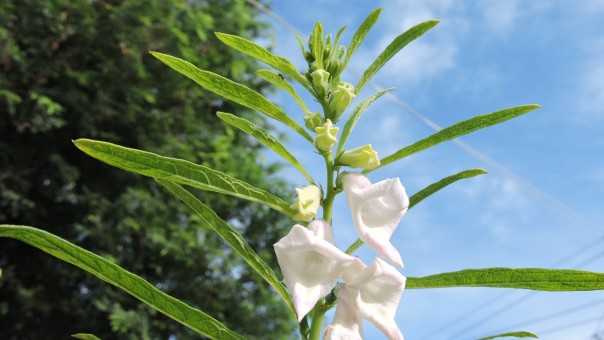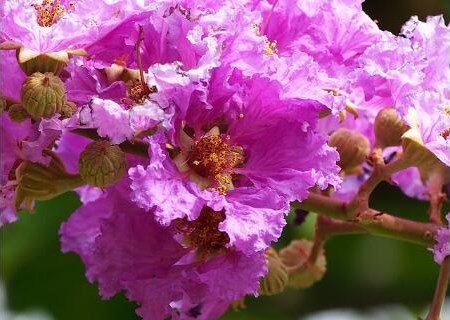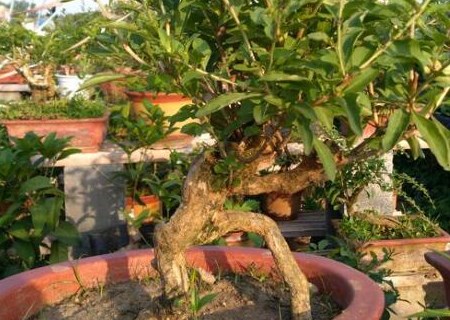Does annual herb sesame blossom? When will it blossom? How do you plant it? How much do you earn from planting an acre?
Sesame, also known as sesame, flax, is a common oil crop in our country, rich in vitamins, a variety of trace elements and protein, often eaten can have the effect of nourishing blood, regulating cholesterol, so many people like to eat, that sesame will bloom? When do they bloom? How? How much does one acre earn?

Sesame flowers and grows most rapidly at flowering stage, which absorbs 70%~80% of nutrients during the whole growth period.
Time of flowering:
Sesame seeds are sown in summer and autumn. Summer sesame seeds are sown in late May to early June and bloom in early and middle July. Autumn sesame seeds are sown in early and middle July and bloom in early and middle August. According to different varieties, flowering also has certain changes, early maturity about 10 days ahead, late maturity about ten days behind.
Planting techniques:
1. Selection of improved seeds: The quality of seeds directly determines the level of yield, and improved seeds are the basis for high yield. Seeds with high yield and comprehensive disease resistance should be selected for planting. In recent years, the better sesame varieties are Zhongzhi No. 35 of Chinese Academy of Sciences, Yuzhi No. 24 of Henan, Fengzhi No. 1 of Shandong, Zhongzhi No. 13 of Hubei, Wanzhi No. 2 of Anhui, etc.
Second, crop rotation: Experience shows that sesame continuous cropping for one year, the incidence of disease in the field is more than 50%, and the incidence of disease in two years is as high as 80%. Summer sesame should be rotated with summer crops such as soybean, peanut, corn and sweet potato, with an interval of three years.
Third, flat cultivation to border cultivation: sesame is not tolerant of waterlogging, flat cultivation to deep and narrow furrow cultivation, the advantage is that the bright water in the field can be quickly removed, and the dark water can be quickly drained. Sesame can grow better, reduce disease and increase yield.
4. Double-layer seeding and seedling raising: after the land is ploughed, the first seed is sown immediately, the seed is covered by a single harrow, and the second seed is sown, and then the straight harrow and the horizontal harrow are repeated several times until the soil is crushed by the harrow. This method can ensure that the deep seeds can absorb sufficient water and emerge on time when the weather is dry, and the shallow seeds can safely emerge when it rains. It can guarantee full seedlings regardless of drought or rain.
5. Proper dense planting and transplanting: about 20,000 plants per mu for single stem type, with plant spacing of 16 cm x 19 cm. Branching density halved, plant spacing doubled.
VI. Reasonable fertilization: mainly farm manure with 25 kg of calcium superphosphate per mu, such as insufficient farm manure, 5 kg of urea per mu. Apply sufficient base fertilizer before soil preparation and bedding. From early flowering to full bloom, topdressing nitrogen fertilizer 12~14 kg/mu, spraying boric acid and potassium dihydrogen phosphate at full bloom to promote full grain.
7. Cultivate and loosen soil: weed and thin seedlings for the first time when there are two true leaves, and weed and thin seedlings for the second time when there are four true leaves. If found that the lack of seedlings should be replanted with soil, to 14~16 cm when the seedlings are deep hoe loose soil. A shallow hoe is carried out again when pods are set.
VIII. Disease and pest control: When sesame leaves 1~2 pairs, spray 1000 times solution of 90% crystal trichlorfon to control pests such as cutworm, and spray carbendazim to control diseases such as blight and leaf spot.
9. Remove the top center: After full flowering, remove the stem end 4~6 cm in the morning on a sunny day to store nutrients and promote yield increase.
10. Sesame seeds are harvested at the right time when they are ripe. Overripe sesame seed buds will burst and fall off.
Planting benefit analysis:
Sesame seeds are black and white. Black sesame seed yield is higher than white sesame seed, but oil content is less than white sesame seed. At present, the main sesame varieties planted are Toshiba 8 and Toshiba 10. The two varieties are white sesame seeds, generally yield 80 kg per mu, high yield can reach more than 100 kg. The whole growth period is about 90 days. The above two varieties are bred by the Institute of Oil Crops, Chinese Academy of Agricultural Sciences. There are also local farm varieties of black sesame seeds, black and bright seed color, aroma, general yield of 100 kg per mu, the whole growth period of 95 days or so.
Time: 2019-03-17 Click:
- Prev

What are the seed planting methods of crape myrtle in the family Lycopodiaceae? What is the effect and effect? When will it blossom?
Crape myrtle, alias: crape myrtle, Chimonaceae, crape myrtle big tree, colorful, very good-looking, often cultivated garden for ornamental; then do you know what are the seed planting methods of crape myrtle? What is the effect and effect? When will it blossom? According to the big flower crape myrtle grower Sister Li told us
- Next

What are the planting methods of potted Chinese wolfberry seeds? How do you spend the winter?
Lycium barbarum has lax requirements on soil, salt and alkali tolerance, dry heat, cold resistance, wide adaptability and strong stress resistance, so it is suitable for family pot culture. So do you know what are the planting methods of potted Chinese wolfberry seeds? How do you spend the winter? Seed planting method of potted Lycium barbarum
Related
- Fuxing push coffee new agricultural production and marketing class: lack of small-scale processing plants
- Jujube rice field leisure farm deep ploughing Yilan for five years to create a space for organic food and play
- Nongyu Farm-A trial of organic papaya for brave women with advanced technology
- Four points for attention in the prevention and control of diseases and insect pests of edible fungi
- How to add nutrient solution to Edible Fungi
- Is there any good way to control edible fungus mites?
- Open Inoculation Technology of Edible Fungi
- Is there any clever way to use fertilizer for edible fungus in winter?
- What agents are used to kill the pathogens of edible fungi in the mushroom shed?
- Rapid drying of Edible Fungi

